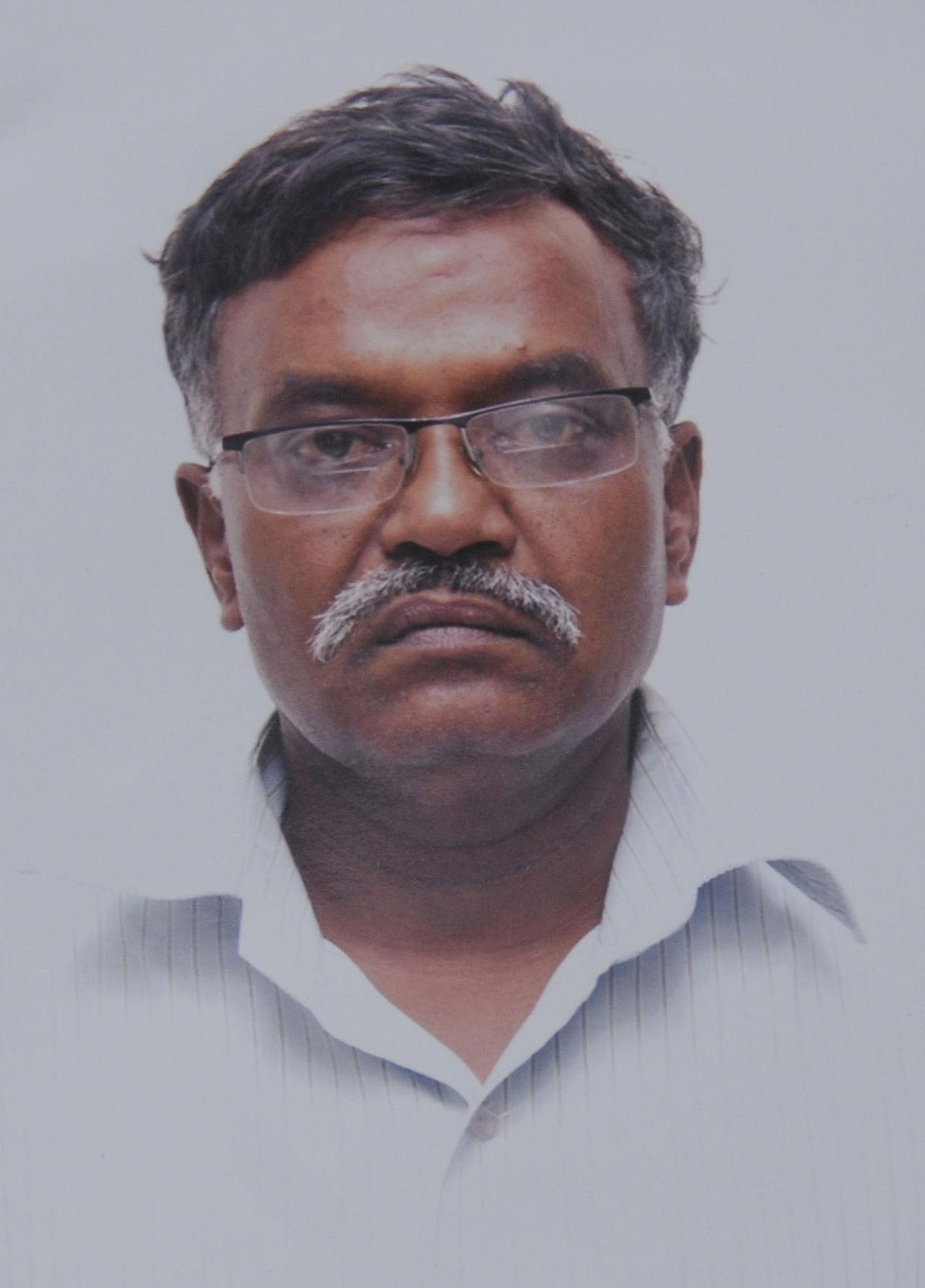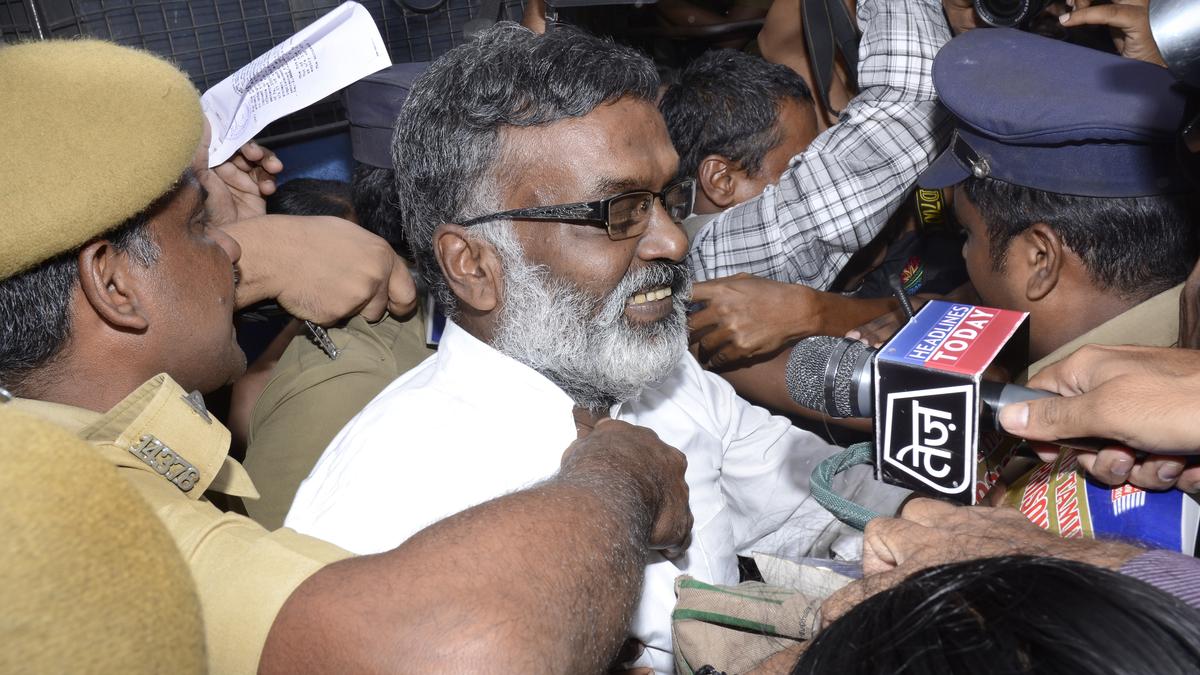Dilshan, 13, was the second child of Kumar and Kalaivani, the daily wagers who lived at the Indira Gandhi Nagar tenement on Pallavan Salai. He left school after his father fell ill and went to a plastic segregation unit to work. The Army officers quarters nearby was full of fruit-bearing trees that attracted children from the tenements across the road. On July 3, 2011, a Sunday, Dilshan and his friends Sanjay, Praveen, and Vignesh ventured into the enclave to gather almonds around 1.30 p.m. They were flinging stones at almonds and mangoes. His friends all of a sudden heard a bang and, to their shock, saw Dilshan slumping down. They ran to their tenement and informed Kalaivani.
Declared unconscious
Kalaivani and others rushed to the enclave and found Dilshan lying with head injuries. They took him in an autorickshaw to the nearby Rajiv Gandhi Government General Hospital where the doctor on duty in the emergency ward declared him unconscious at 1.45 p.m. The doctor wrote in the accident register that the boy fell off a tree at 1.30 p.m. near Flagstaff Road, Old Fort Glacis Officers’ Enclave. He noticed two head injuries: one on the left temple and the other on the right temple. As the boy was unconscious, the doctor requisitioned the services of a neurosurgeon and prescribed a CT scan, which revealed a brain injury. Despite intense treatment, the boy died at 5.20 p.m.
Dilshan. File
| Photo Credit:
The Hindu Archives
The news infuriated the residents of the tenement who laid a siege to the quarters. The Army authorities started inquiries. Muthuraj, Inspector of Police, Fort Police Station, took up the investigation. In fact, Karuppusamy, an Army guard, said in his testimony that around 2 p.m., he received instructions from the Army Control Room not to let outsiders enter the quarters and when he went down there, he found a crowd throwing stones.
Firearm injury on head
The autopsy revealed that the boy died of shock and haemorrhage owing to a firearm injury to the head. The recovery of two pieces of metal (one of brass/copper and the other of lead) from the area, about five feet from the spot, indicated the use of a revolver. The police were clueless as to who had pulled the trigger.
Initially, it was reported that the boy was shot dead, allegedly by a security guard, while he was climbing a tree to pluck fruits. The Army authorities, however, denied the charge, arguing that armed guards were not stationed in the quarters.
The Chief Minister’s demand
Chief Minister Jayalalithaa termed the incident unacceptable and demanded that the one who had opened fire be handed over to the police. Army Chief Gen. V.K. Singh warned of stern action if anyone from the Army was found involved in the killing. The incident generated so much heat between the Army and the civilians that the Director-General of Police transferred the probe to the Crime Branch-CID on July 4.
The CB-CID, on July 9, arrested Lt. Col. (retd.) K. Ramaraj, who lived at No.11/4, OEG Officers Enclave, Flag Staff House Road, Fort St. George. Though he retired from service on April 30 that year, he was permitted to occupy the house for three more months.

Retired Lieutenant Colonel K. Ramaraj. File
| Photo Credit:
The Hindu Archives
Ramaraj was in possession of 0.30 Springfield Rifle and ammunition allotted to him while in service. The licence of the rifle expired on March 12, 2008. When the officials searched his house after the murder came to light, the weapon was not found.
Police investigation disclosed that on the day of occurrence, Dilshan scaled the compound wall of the quarters, while Sanjay stood on the wall and Praveen was standing on the pavement outside. The retired officer was angry after seeing the boys as he had warned them in the past against trespass. He opened fire from his rifle from the balcony of his house. Jaya, a domestic help residing in the house of another retired officer in the quarters, told the police that Ramaraj was prone to anger, and he would chase the boys scaling the compound wall to pick almonds. She also deposed that on one occasion, the boys had damaged the windshields of his car.
Ramaraj told the police that he had dropped the rifle in the Cooum at the Napier Bridge and thrown the unused cartridges in the river near the MLAs’ Hostel. Fire service personnel recovered them. Reports confirmed that the bullet which killed Dilshan was fired from this rifle.
On August 3, 2011, the CB-CID filed a charge sheet against Ramaraj for causing the death of Dilshan by opening fire, punishable under Section 302 (murder) of the Indian Penal Code, covering up the place of occurrence with leaves after Dilshan was shifted to hospital, and possession of a rifle without licence.
Confession
R. Sekar, former Director-General of Police who was then the Additional Director-General of Police (ADGP), CB-CID, said the case was challenging. “We put our heart and soul into it, connecting the crime and the perpetrator of the crime and recovering the weapon used, and getting the accused to confess. We ensured the conviction of the accused.”
The prosecution examined 55 witnesses and produced 60 exhibits and 14 material objects. On April, 20, 2012, Additional Sessions Judge of the Fast Track Court 5 R. Radha convicted Ramaraj of the charges of murder, concealing the evidence, and possession of pistol without licence. He was sentenced to life-imprisonment and asked to pay a ₹60,000, of which ₹50,000 was to be paid to Dilshan’s mother as compensation.
Appeal dismissed
Ramaraj filed an appeal in the Madras High Court. In 2013, the Bench comprising Justices S. Rajeswaran and P.N. Prakash dismissed his appeal and concluded that Dilshan died of gunshot wounds and not of any other cause, much less falling from a tree.
However, the judges held that there was no material to show that the accused had tried to cover up the place of occurrence with leaves as argued by the prosecution. So, he was acquitted of the charge under Section 201 (causing disappearance of evidence). The High Court confirmed the life imprisonment awarded to Ramaraj.
Published – April 13, 2025 10:39 pm IST
